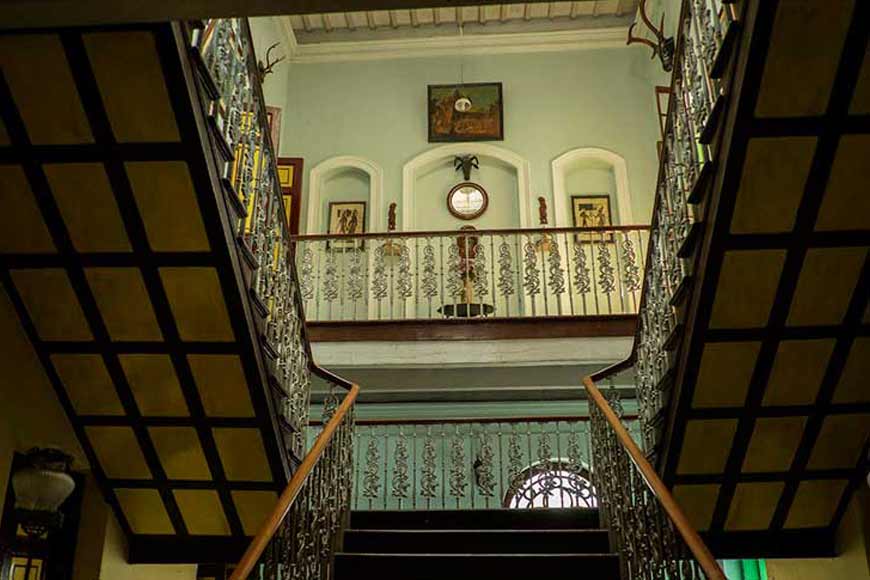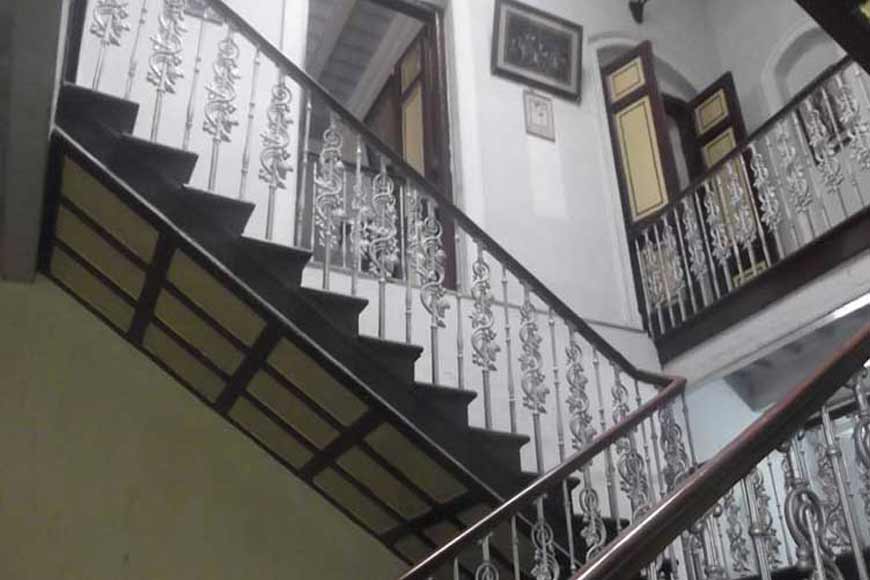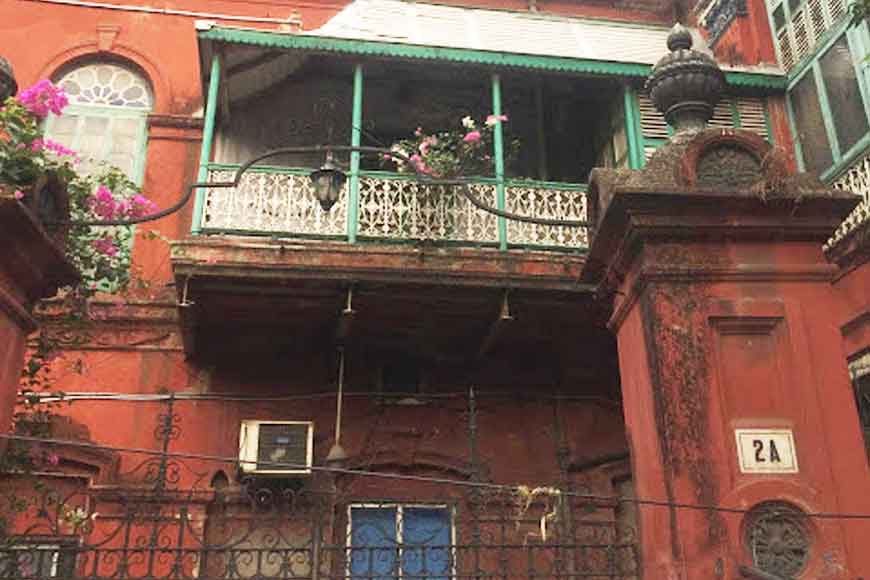The Staircase Bridge—175-year-old Thanthania Laha Palace—GetBengal story

Kolkata witnessed Asia’s first cantilever hanging bridge, a result of the British empire making an effort to turn the city into a trade hub. Though a lot of those facades have been lost over time, Kolkata is still home to some of the erstwhile Raj Baris or palace-houses, reflecting the opulence of its residents, some of whom were richer than their British rulers. Just like Howrah bridge, a mini cantilever staircase can still be viewed connecting two towering edifices in one of the Palace houses.

Kolkata has managed to preserve some of these palace houses, in their ancient charm, with typical Gothic structures, some with Indian art forms artistically interspersed with western architectural wonders. What is even more interesting are the stories of families hidden behind those walls. Surprisingly, that era is not lost, rather it transcends everything modern and still holds true in the grand courtyards of these palaces that showcase their splendour every year when Durga Puja arrives. The stories of Kolkata's palace houses are not just about the architecture but also about the traditions and cultural heritage they preserve. These traditions are a testament to the rich history of the city and the men and women who were part of the Bengal Renaissance, a period of cultural and intellectual revival in the region.
The cantilever staircase of Thanthania Laha Palace is not just another ‘connecting’ structure, it has witnessed footsteps of hundreds of residents, maids and servants for over 300 years, interconnected like a spider’s web. Standing on seven acres of land in North Kolkata’s Thanthania, the locality famous for the Thanthaia Kali Bari, the Laha Palace has grown over the years to accommodate the growing family. One house is 300 years old, while the newer one is 175 years old, but they are connected by a hanging staircase and a series of complicated alleys where maybe centuries ago children had played ‘Lukochuri’ or a loving couple snatched some private moments.
The ’new’ house of Thanthania is still inhabited by the younger Lahas and is in very good shape with the cantilever balcony showcasing the arched windows and green shutters. The ornate hanging staircase turns this palace into a dream of black and cream, the rusted wrought irons still go strong despite the wear and tear. The whole hanging staircase and balcony opens on to a magnificent Thakur Dalan or central courtyard. The black and white monochromatic façade of the stairs and balcony turn jubilant with colourful stucco ornamentations above the fluted archways. The second level of the house has delicate Zenana work. The three courtyards of Laha mansion hold memories of friendly cricket matches among the boys of the family, of Durga Puja celebrations and of parties held for the British.

The traditional Durga Puja of the Laha house of Thanthania is famous world over. The courtyards turn into a show of colours and celebrations every Durga Puja, when the family deity in gold known as Jayjayman is brought out and worshipped. Rest of the year, the deity moves between houses of different family members. The Laha Palace also boasts of a beautiful garden that can be viewed from the rooftop and walls that divide the four houses standing on the same premises with hundreds of family members still living in the quarters. Their grand way of life may have gotten lost, but the memories linger.










